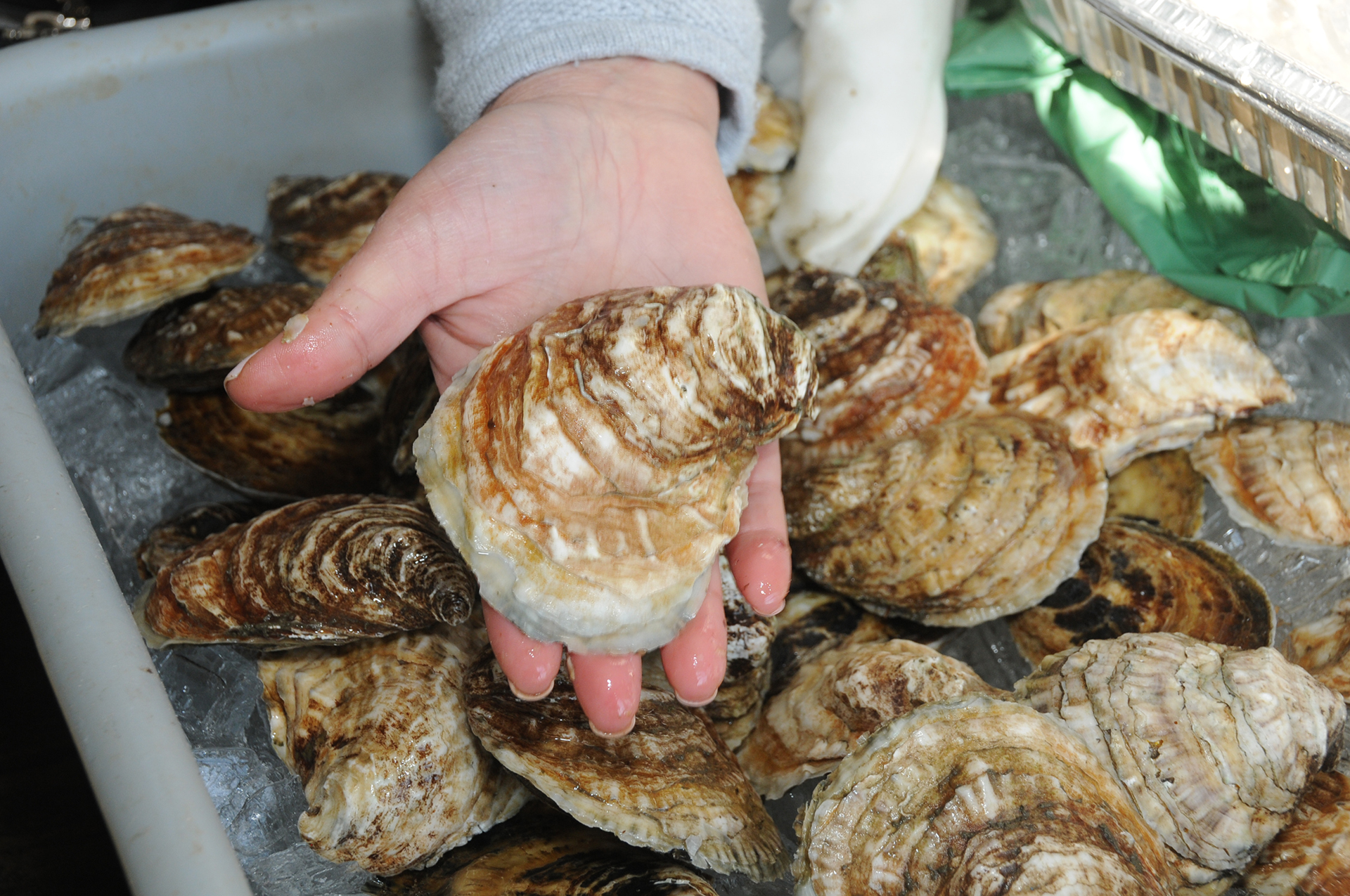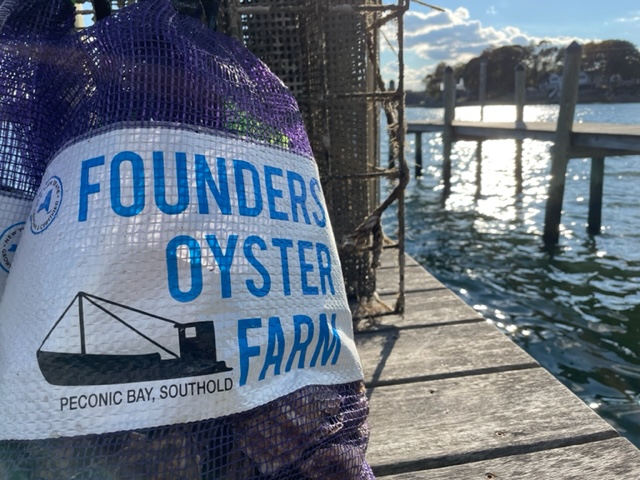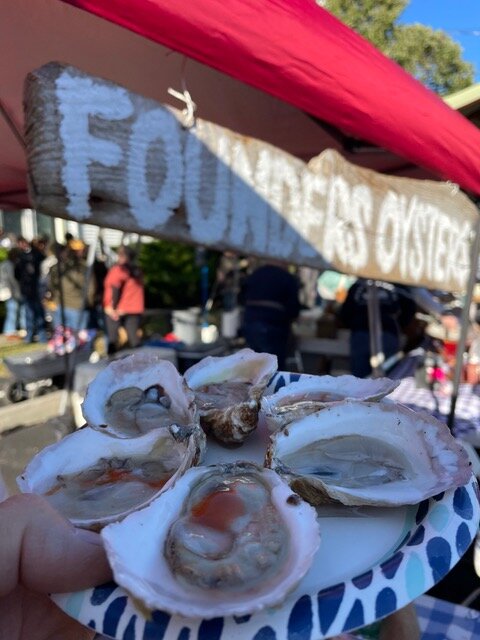Oysters Are Making a Comeback to the North Fork

This is a story of loss and revival, one of the many ways the North Fork’s rural character is resulting in environmental improvement through the appreciation for fresh, local, good food.
The North Fork’s farms and vineyards have preserved land, and now the love of local shellfish is helping preserve the cleanliness and beauty of local bays. After a long decline, the oyster industry is making a comeback.
“The demand for oysters is amazing and continues to grow, especially locally,” says Matt Ketcham, owner of Peconic Gold Oysters.
Back when East Marion and Orient were called Oysterponds (charmingly, East Marion was Oysterponds Upper Neck, and Orient was Oysterponds Lower Neck), the North Fork was a hotbed of oyster production for the entire United States. However, the industry entered a steady decline after its peak in the 1890s.
Historically, the oyster industry has faced challenges. Pollution, sewage and over-harvesting destroyed New York’s oyster industry, leading to the closure of the state’s last oyster beds in 1927. Long Island fared better, but coastal storms destroyed oyster beds and changed the salinity of the water, introducing predators to the oyster seeds.

The commercial oyster industry peaked again in 1992, but then declined as oysters were hit with a parasitic disease. Oyster harvests didn’t begin to recover until 2006.
When North Fork locals noticed the Braun’s Oyster Company trucks repainted to read “Braun’s Seafood Company,” it seemed a sad, symbolic end to the oyster industry on Long Island.
So the resurgence of the industry is cause for celebration.
Long Island has uniquely ideal conditions for oyster habitat. Millennia ago, the receding glaciers left deep, nutrient-rich waters perfect for oyster growth. The North Fork Oyster Company calls the Long Island Sound “a unique and treasured environment for oyster aquaculture.”
The East End’s bays, in particular, are ideal oyster habitat. Almost half of the 79 oyster cultivation permits issued statewide so far in 2023 are for farming in Peconic and Gardiners bays.
Happy, healthy oysters are delicious oysters. The oysters produced in these waters are prized for their flavor, supplying high-end restaurants from the North Fork to Manhattan.
Peconic Gold Oysters in Cutchogue is the sole producer of “Peconic Golds,” oysters with a creamy texture, sweet flavor and smoky finish.
“We are one of only a few growers that harvest year-round,” says Ketcham. Freshly harvested oysters are sold at their farm stand at 21125 Route 48 in Cutchogue, on the north side of Sound Avenue.

Founders Oysters in Southold has an annual harvest of 250,000 oysters. They grow crostecia Virginica, the East Coast oyster, in the Peconic Bay.
“The bay has great tidal flow and nutrient-rich, clean water,” says owner Steven Schnee. The oysters can be purchased at the roadside stand at 140 Founders Path, Southold, open on weekends.
Aside from being delicious, oysters are highly nutritious. Six oysters provide 300% RDI of zinc, 12 grams of protein, only 50 calories, and are high in vitamin B12, selenium, vitamin D, iron and copper.
And while people are enjoying the delicious flavor of fresh oysters, the oysters are steadily doing their part to improve North Fork waterways. Oysters naturally filter many gallons of water each day as they grow to maturity. As they feed, oysters filter microalgae and microscopic organisms from the water, helping to clean water by controlling phytoplankton abundance. A single oyster cleans 50 gallons of water a day.
Many oyster farmers are tapping into the vibrant agritourism market on the North Fork. Oysters can be purchased online (Peconic Gold Oysters). Some oyster growers are using the CSA model popularized by organic and local produce farmers (Little Ram, Yennicott).

Some, such as Founders Oysters, have teamed with local vineyards for special events. There is even a happy hour food truck and monthly oyster kits (Little Ram Oysters). Many oyster producers provide private shucking parties (see their websites for information). Founders Oysters offers cruises on its restored 1936 Chris Craft cabin cruiser.
The future of oyster growing on the North Fork looks bright.
When asked how many oysters he harvests, Ketcham laughed, “Not enough of them!” He began farming in 2013, and he has just expanded into a second 10-acre lease in Peconic Bay with the Suffolk County Aquaculture Lease Program.
Ketcham is optimistic about the future of oystering on the North Fork.
Schnee agrees. “As long as people have an insatiable appetite for delicious, fresh oysters, the Long Island region will continue to flourish.”

FIVE EAST END OYSTER FARMS
Founders Oyster Farm
201-960-2005, foundersoysterfarm.com
Little Ram Oyster Co.
631-896-0766, littleramoysters.com
North Fork Oyster Company
631-553-7887, northforkoystercompany.com
Peconic Gold Oysters
631-495-7061, peconicgoldoysters.com
Yennicott Oyster Company
yennicottoysters.com



